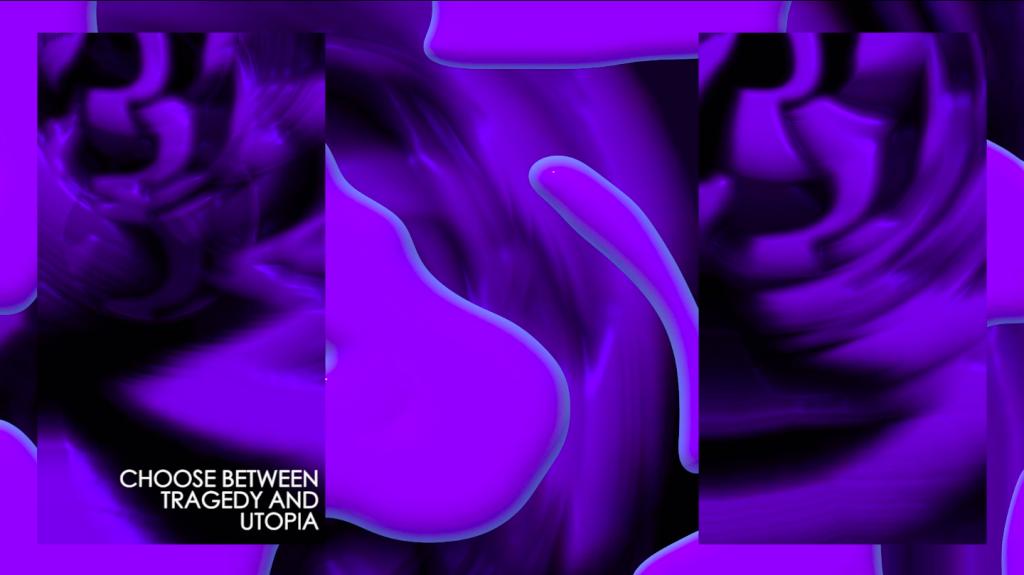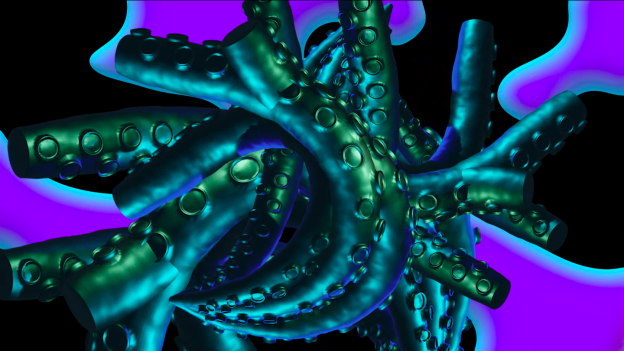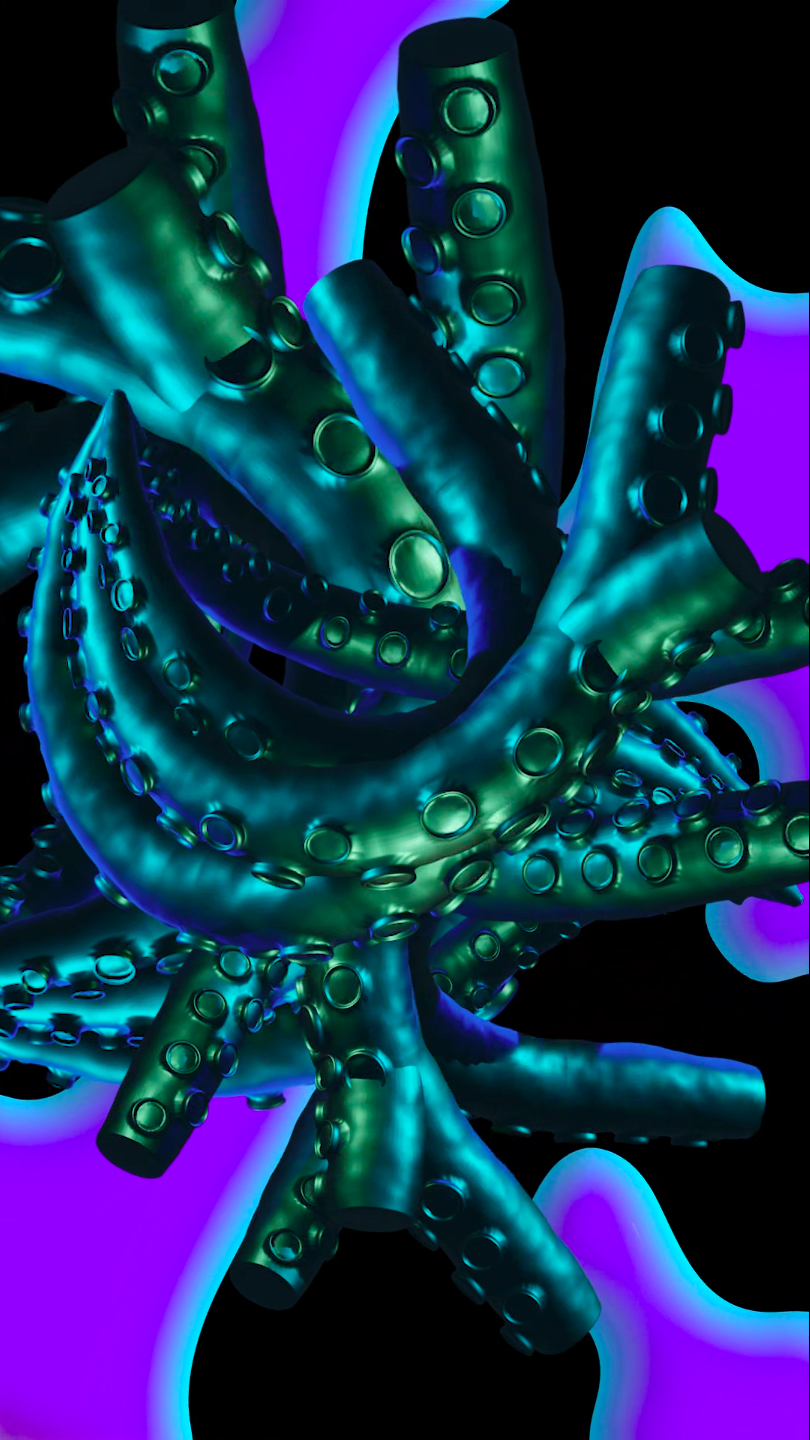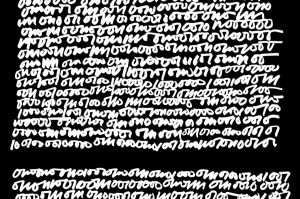with VIRTUALIZED
a video by DAGMAR SCHÜRRER
Read this essay in French — Read this essay in Russian
Current unprecedented State anti-LGBTQ+ violence in Poland could be seen by some as another story of backlash, police, and an ‘obscurantist’ part of Europe. Others call it already “the Polish Stonewall.” Neither properly West nor exactly East, Central Europe was once defined by the Hungarian-Jewish lawyer and political theorist István Bibó, on the ruins of Budapest, as this space that has one sure particularity: both World Wars started here, Sarajevo and Danzig/Gdańsk. Could it be the current Polish (and regional) events are a case study on how global and regional issues crisscross nowadays?
“SET IN POLAND – THAT IS TO SAY, NOWHERE” (ALFRED JARRY, UBU ROI, 1896)
Dazed was the driver of a pro-life foundation van once he found himself under attack by Margot Szutowicz, a non-binary activist. Cutting the tires, removing the mirror and the license plate, damaging the rearview camera, and staining the vehicle with paint to react against the banner on the car, saying: “The LGBTQ+ lobby wants to teach children: at 5, how to masturbate; at 6, how to express consent for sex; at 9, how to have their first sexual experiences and orgasm. Stop pedophilia!” Dazed were the spectators near the main gate to the University of Warsaw—between the statues of Jesus and Copernicus—when they saw the first, wearing a rainbow flag, and then a few dozen more activists blocking a police van detaining yet another activist, arrested. Dazed was the world looking at the brutal-yet-chaotic intervention of the police: arresting forty-eight randomly-chosen people, activists but also onlookers; throwing them on the ground to handcuff them without any mention of reasons for their arrest; transporting them from one station to another for up to twelve hours; questioning them at night; forcing them to sleep without a blanket or mattress. Nor food or water. And dazed am I, writing these words under a rainbow flag brought from Warsaw to Paris where I am living in a text that wasn’t supposed to deal with the latest news.
Opposite my alma mater—whose teachings enabled me to get free, interdisciplinary higher education, leading to a joint PhD with the Sorbonne—those handcuffed are children both of my LGBTQ+ community and of my home country. Its newly-elected president, my parents’ choice, stated this year that his “parents’ generation for forty years fought to eliminate Communist ideology from schools. . . . They didn’t fight for this so that a new ideology would appear that is even more destructive for people.” And later, he agreed: “LGBT is not people, it’s an ideology.“
I have to add: this is not America. Neither is it Stonewall. Yet this is the stage for an essay on the current social, political, and cultural crises in these complex pandemic times, during which stakes are, maybe, higher than they ever were. Afterall, about seventeen thousand nuclear warheads still exist on this rapidly warming planet. Emotions are also high, no matter how used we have become to more and more brutal scenes from all around the world, documented with more and more pixels on our smartphones. Reacting to the current cultural war in Poland, and in particular to the growing use of homophobic propaganda, Professor Kevin Moss formulated this short, but eloquent, question: “Make Poland Russia again?” Setting aside East and West, Trump and Putin, neoliberalism and Communism, that phrase denotes the (Central) European features of the picture I would like to explore. It looks like a variation of Alfred Jarry’s prophetic burlesque on power and greed, set (by accident) in Poland (later adapted to opera by Polish composer Krzysztof Penderecki just after the end of Communism). Yet at the same time, it is a variation rich with knowledge of what the twentieth century was.
“THIS IS NOT . . .” STONEWALL
How do intimate choices become vital to debates on a country’s future (but also how can they be ignored in cases such as those of Berlusconi or Trump)? This is a question one may ask, observing (not only) the Polish cultural wars of the last years, in which new political forces emerged. In addition, women’s and LGBTQ+ movements are increasingly intervening in the Polish political field, rising in defense of individual freedom of choice, in the face of the traditional power of the Church, and the State over bodies. Poland, as a country with a rapidly-growing economy (22nd in nominal GDP), is skeptical of the sociocultural changes this growth brings, is not entirely secular, but neither is it officially religious. With millions migrating into Western European countries—yet itself not welcoming to refugees—Poland is struggling to define how its modern identity may mirror important features of Europe as a whole.
Nowadays, world-famous Polish “LGBTQ+-free zones” exist in about one hundred municipal and regional councils, mainly in the Eastern part of the country. Attempts to completely ban abortion and dismiss gender ‘ideology’ continue alongside Members of Parliaments’ declarations, such as the one by Joachim Brudziński: “Poland is most beautiful without LGBT.” The vans, financed by an anti-abortion foundation, have moved through the streets of Polish cities since early 2019. There is no way to stop them because the Polish Penal Code’s Article 256 mentions “hatred on the basis of national, ethnic, racial, religious differences or because of non-denominationalism,” but neither hatred on the basis of homophobia nor of sexual orientation. Since Poland became the most homophobic EU country, according to the 2020 ILGA report, activists reacted with growing intensity, leading up to Margot Szutowicz’s attack on the van. This was considered a “hooligan act,” as police stated, and bodily injuries of some of the arrested that followed were documented by the representatives of the National Mechanism of Torture Prevention. It could seem, from these reports, that we are witnessing ‘Polish Stonewall’ riots. This was the way the subject was characterized by American news sources such as Time, NBC and Vice. However, a ‘Polish Stonewall’ it is not, and this is the core of the problem.
Warsaw’s August 7, 2020 was no June 28, 1969 Stonewall, not only because of the fifty-one-year gap, but because of what happened in Warsaw in March 1968. The exact spot where the protests against Margot Szutowicz’s June 2020 arrest happened was one of the settings of a much earlier, and much bigger, political instrumentalization of fear: factions of the Communist regime incited and manipulated antisemitic riots in order to demonstrate power, and to gain control over the direction of the Party, leading to the expulsion—with passports stating “the holder is not a citizen of Polish People’s Republic”—of over fifteen thousand Poles of Jewish descent. The very few that survived the Holocaust were often intellectuals, artists, scientists. It is more than probable that the current events in Warsaw are, once again, orchestrated to play a role in an internal conflict in the ruling coalition between the factions of Prime Minister Mateusz Morawiecki and Minister of Justice Zbigniew Ziobro, who both hope to gain a dominant position after the retirement of the leader of the governing party, Jarosław Kaczyński. However—as in 1968, so in 2020—besides the instrumentalization of fear against a minority, there is hostility, if not hatred, that can also be (and is and was) instrumentalized. There is also the (subconscious) memory of previous events of the same kind that reveals unresolved, memorial issues of a society: as the debate on the Polish participation in the Holocaust and, more generally, the legacy of Polish Jews that are (almost) no more in the country. However, the buildings, belongings, and traces of their presence remain.
As Adam Ostolski has argued, Polish homophobic discourse overwrites patterns of Polish antisemitism. Just as, in the 1930s, there was no juridical protection for the Jewish minority, and newspapers and magazines could explain away the effects of this fact, there is no juridical protection against homophobia nowadays. Structural aspects of both have been noted, as well as the historical continuity between them, including bans by the law. This is the deepest layer of the picture, stratified as a palimpsest, but also as rhizomatic since the globalized world that shows both regional features and transcultural paths, repetitions and innovations that find a crossing in Central Europe, as Helga Mitterabauer and Carrie Smith-Prei put it in their volume of studies comparing the 1900’s and 2000’s in the region.
LOST IN TRANSLATION OR THE FRUSTRATED IN-BETWEENNESS . . .
Reading the Warsaw events as ‘another Stonewall’ on the planet brings both hope (for change) but also frustration (of belatedness). The former is often forgotten, especially once we look at different regions, groups, minorities striving for emancipation. Overlooking Warsaw’s uniqueness may happen for obvious reasons: to confirm the international, political importance of the made in the USA model is also to confirm the role of the United States as a dominant ‘superpower’ or even ‘hyperpower’ of the neoliberal world order. To prove how great again the US can actually be—may mean proving its ability to either inspire, or to dismantle change, in other contexts around the world.
Numerous conflicts on the planet, in which the oppressed minority decides to react—(not only) through (non-)violent means—are often seen as a variation of the path known best since the Civil Rights movement of the 1960s, followed by the progressive (yet still far from being fully accomplished) emancipation of women, LGBTQ+, or disabled Americans. This progressive element is understandable because of the United States’ political, economic, and cultural position on the planet, but also because of the cultural (racial, post-colonial, gender . . .) studies disciplines developed to understand these elements of society, deepening our reading of the individual in relation to the society. However, these factors also uniformize the perception of any movement on the planet that seems similar to the American context. In short, as representations of minorities’ liberation paths are best known in and through scientific and cultural production based on the evolutions seen in the United States, they may influence—if not dominate—both the external perception and the way the actors of the events (desire to) perceive themselves.
The perspective of the oppressed, on the one hand, can find inspiration in models more and more easily accessible since the invention of the Internet. On the other hand, dominant groups inspire and interconnect in the same way. To make Poland great again merges diverse populist agendas narratives, discourses, and state funds. Together, they promise modernization supposed to erase (the frustration of) any shadow of the centrally-planned Communist economy and its heritage while simultaneously refusing the consequences of industrial development nowadays known (and felt) almost every day of the year. Therefore the dire need for smog reduction, the continuation of high coal use, the strain on natural reserves (from unregulated rivers to the last European wild forest) reflect Brazil’s Bolsonaro, and his attitude towards the country’s natural and wild places.
Poland, seen from a global perspective, is usually ranked as a semi-peripheral country at the threshold of the core, highly-developed countries (according to Immanuel Wallerstein’s world-system theory), as is Brazil. To many Poles’ mentality “the threshold” status is exactly the problem: attempting to overpass (or forget) this in-between position is what unites the desires on both sides of the Warsaw riots as they translate their situation to one perceived as ideal—be that one of dominance and power, or one of freedom of self-expression, including of sexuality. LGBTQ+ activists may dream of a Stonewall-type uprising, and of the Castro, San Francisco, while their opponents, in turn, dream of Charlottesville or the Texas Ranger. It is worth noting that Poland’s newly-elected president visited the White House to sign some (fairly) important documents just a few days before his election. In many Polish eyes, the United States remains both a superpower and an idealized model. Thus, conflicts and paradoxes proper to the American context influence the perception of conflicts and paradoxes proper to Poland. Expressions of this influence range from emancipatory movements to populist-style politics, twitter wars, and even comparisons of the Polish presidential couple’s fashion to the Underwoods from Netflix’s House of Cards. Staring, if not gaping, at the US, Poles also play a game with both their Eastern and Western neighbors: from discussions on the presence of more American troops in Poland (against Russia) to those on the exploitation of shale gas, a move that acts against the EU ecological preoccupations. But indeed, what about the rest of (Central) Europe?
. . . IN “THE REGION OF DIFFERENCES,” BUT LACKING RECOGNITION
Since the end of Communism, freedom gained by Central European countries enabled them to engage both in processes of neoliberal modernization proper to late capitalism (however, we could discuss if, at the time, there was truly “no alternative,” as one of my father’s idols used to say) as well as integration with structures of NATO and the EU, the imperfections of which are becoming more and more clear nowadays. At the same time, the development of civic society brought to public consciousness issues of minorities and marginalized communities, in particular, previously silenced voices (such as the LGBTQ+ community) that could not express themselves, in almost any manner, under the Communist rule. However, recent years have shown that no matter the macroeconomic changes, sociocultural evolution cannot uniformly adhere to simplistic models. In other words, the rich multicultural and multiethnic—but also totalitarian and traumatized—past of the region, called by Timothy Snyder the “Bloodlands” of the twentieth century, cannot be forgotten.
Central Europe can be seen as the “region of differences” (Region der Differenzen) as the Austrian-Hungarian-Slovak and founding father of the Austrian school of Central-European studies, Moritz Csáky puts it. His biography reflects the particularities of this part of Europe called Central, the one that became the “Shatterzone of Empires,” according to Omer Bartov. Central Europe remains marked by the historical trauma of the twentieth century, yet is also tempted by national myths born in the nineteenth century, and is hampered by a permanent lack of recognition as countries in the region remain insufficiently acknowledged by the West (or more precisely: the core of the world-system).
What is crucial here, and needs to be taken into account in every analysis of socio-political events in the region, is the cultural construction of modern nations: Polish, Czech, Slovak, Ukrainian, or Lithuanian national identities (and narratives) were, to put it simply, not created by the power and administration of any state in the nineteenth century, but founded in, preserved by, and developed through, culture. That’s because the State was a foreign, more or less hostile, Empire (be it Austro-Hungary, the German Second Reich or tsarist Russia). For in the twentieth century, Nazi and Communist occupation followed, and discourses from that time were reused and readapted to counter political and cultural foreign influence and indoctrination. This nationalism, as John Connelly recently suggested, may be the cause, not the effect, of empires and ideologies trying to dominate the region without durable results.
The existential fear of suddenly disappearing from the world’s map starts in Central Europe as early as the modern era, since, for example Poland, has not existed in an independent form since 1795—not to mention the mass extermination, done by the Nazi and Stalinist regimes and the forced displacements of several millions of people in the 1940s. Polish society’s structure passes from major cultural, ethnic, and religious disparities in 1935, to an almost uniform socio-economic and cultural stratification only a decade later, when Communist rule imposes radical changes. Andrzej Leder interprets it as “sleepwalking the revolution” in his brilliant 2013 essay. Changes that occurred much slower elsewhere (urbanization, industrialization, development of a middle-class, political emancipation of women) happened in Poland in a dramatically short period. They resulted in an intense anguish, one that nourishes the deepest layers of the Polish psyche, stemming from the unique position of having been witnesses, victims, and (also) perpetrators of the Holocaust at the same time. Research is still trying to understand—if such a thing is possible—the consequences such a trauma has on those rebuilding lives in the ruins of a world that only partly belonged to them in the first place, while simultaneously re-discovering multiculturality—though in its globalized form—since 1989.
“TO BE A DEMOCRAT IS NOT TO FEAR”: PROGRESS OR CHANGE?
The Polish (and regional) anguish of disappearing or dissolving is thus motivated both by the traumatic past of the region and by the neoliberal logic of uniformization, uberization, and the McDonaldization of societies. This is the deepest background of the regional attachment to culture and its values, one that has become hostile and at times xenophobic in the globalization processes. This is also one of the main sources of the reticence against individual freedoms and the acceptance of corporeal (gender, sexual, racial) difference. Since freedom was gained, the refusal of attempts to impose ‘foreign’ models in Poland can be explained through mechanisms of self-colonization, as articulated in the inspiring 2011 essay by Jan Sowa: sociocultural modernization demands from the EU are dismissed in the name of tradition and religion—proper to the region and the country in particular—that the ‘neo-bolshevist’ Western world is supposed to have forgotten. Yet this reaction is also a symbolic counterpart to the peripheral feeling of economic exploitation. In this discursive matrix, Poland “rises from its knees”—as the PiS propaganda repeatedly claims—in a way similar to the manner America is supposed to become great again. In both cases—though to a different extent—homophobia, lesbophobia, and transphobia are instrumentalized to awaken what gender studies call “heteronationalism,” that is, the adoption of anti-LGBTQ+ attitudes as an expression of insurgent national, ethnic, and/or religious identity.
Heteronationalism is, however, also an answer to femo-/homonationalism, that is, “a political discourse that obscures colonialism and global inequality, while focusing instead on the allegedly unique homophobia of non-Western countries,” as Peter Druker puts it. Poland may be a good example on how external pressures in the name of a unified, late-capitalist, globalized modernization model lead to frustration, refusal, hostility, and hatred that were easily manipulated by politicians. Especially in a region whose interdependent relation to the West could be seen as a variation of the orientalism model forged by Edward Said, as Larry Wolff adapted it. That’s because the Enlightenment, viewing Warsaw or Budapest from Paris or London, consisted also in deliberately cultivating “an idea of the backwardness of Eastern Europe to more readily affirm the importance of Western Europe.” But today, to see Central Europe and Poland is also an invitation, if not an obligation, to rethink global, social, and economic justice.
Recently, globalized economic interdependencies and different forms of injustice were unveiled in their fragility and cruelty by the pandemics that will dominate the planet for some years to come. Here, today, Lennard Davis’ conclusion, pronounced a few years ago from the perspective of disability studies, sounds more relevant than ever. As he put it: “that difference is what all of us have in common. That identity is not fixed but malleable. That technology is not separate but part of the body. That dependence, not independence, is the rule.”
As István Bibó once said: “to be a democrat, is not to fear.”
From the margins, sometimes one sees best.
~Mateusz Chmurski
Paris, August 16th 2020
Ascherson, Neal. Review of Bloodlands: Europe Between Hitler and Stalin, by Timothy Snyder. The Guardian, 8 Oct. 2010, https://www.theguardian.com/books/2010/oct/09/bloodlands-stalin-timothy-snyder-review.
Associated Press. “Polish Stonewall? Protesters decry government’s anti-LGBTQ attitudes.” NBC News, 10 Aug. 2020, https://www.nbcnews.com/feature/nbc-out/polish-stonewall-protesters-decry-government-s-anti-lgbtq-attitudes-n1236273.
Atlas nienawisci [Atlas of Hate]. https://atlasnienawisci.pl/.
Bartov, Omer, and Eric D. Weitz, editors. Shatterzone of Empires: Coexistence and Violence in the German, Habsburg, Russian, and Ottoman Borderlands, Indiana UP, 2013.
Bault, Olivier. “What happened to Polish shale gas?” Visegrád Post, 29 Mar. 2018,
https://visegradpost.com/en/2018/03/29/what-happened-to-polish-shale-gas/.
Cienski, Jan, and Andrew Kureth. “Poland takes a tough line ahead of COP21.” Politico, 30 Nov. 2015, https://www.politico.eu/article/poland-tough-line-cop21-paris-climate-summit/.
Dellanna, Alessio, and Matthew Holroyd. “LGBT campaigners denounce President Duda’s comments on ‘communism’.” Euronews, 15 June 2020, https://www.euronews.com/2020/06/15/polish-president-says-lgbt-ideology-is-worse-than-communism.
DeYoung, Karen. “His reelection uncertain, Polish president seeks a boost from Trump.” The Washington Post, 21 June 2020, https://www.washingtonpost.com/national-security/his-reelection-uncertain-polish-president-seeks-a-boost-from-trump/2020/06/21/54e35e00-b324-11ea-8f56-63f38c990077_story.html.
Druker, Peter. “Homonationalism, Heteronationalism and LGBTI Rights in the EU.” Public Seminar, 31 Aug. 2016, https://publicseminar.org/2016/08/homonationalism-heteronationalism-and-lgbti-rights-in-the-eu/.
Grzywaczewski, Grzegorz, and Ignacy Kitowski. “The ecosystems of large unregulated rivers of Central Europe are under pressure.” Oryx, vol. 53, no. 4, 2019, pp. 608–609, doi:10.1017/S0030605319000644.
Hume, Tim. “Violent Arrests Spark Protests Against Polish Government Homophobia.” Vice, 12 Aug. 2020, https://www.vice.com/en_us/article/k7qkbe/polish-stonewall-margot-szutowicz-arrest-homophobia.
ILGA Europe. Annual Review of the Human Rights Situation of Lesbian, Gay, Bisexual, Trans and Intersex People. 4 Feb. 2020, https://www.ilga-europe.org/sites/default/files/Attachments/Annual%20Review%202020.pdf.
Lechowicz-Dyl, Katarzyna. “W związku z piątkowym zbiegowiskiem w Warszawie zatrzymano 48 osób” [“In connection with the Friday rally in Warsaw, 48 people were detained”]. Polska Agencja Prasowa, 8 Aug. 2020, https://www.pap.pl/aktualnosci/news,696067,w-zwiazku-z-piatkowym-zbiegowiskiem-w-warszawie-zatrzymano-48-osob.html.
Matysiak, Jan Carl. “Calls for help: Bialowieza—the last wild forest in Europe.” Global Forest Coalition, 20 Oct. 2017, https://globalforestcoalition.org/calls-help-bialowieza-last-wild-forest-europe/.
Mitterbauer, Helga & Smith-Prei, Carrie, eds. Crossing Central Europe. Continuities and Transformations, 1900 and 2000. University of Toronto Press, 2017.
Ostolski, Adam. “Spiskowcy i gorszyciele. Judaizowanie gejów w polskim dyskursie prawicowym” [“Conspirators and scandals. Judaizing gays in the Polish right-wing discourse”]. Jak się dzielimy i co nas łączy? Przemiany więzi i wartości we współczesnym społeczeństwie polskim [How do we share and what connects us? Transformations of ties and values in contemporary Polish society], edited by M. Głowacka-Grajper and E. Nowicka-Rusek, Warsaw: Nomos, 2007, pp. 156-178.
“Poland GDP, 1985-2019 Data.” Trading Economics, https://tradingeconomics.com/poland/gdp. Accessed Aug. 2020.
“Pompeo signs deal to move US troops from Germany to Poland.” DW News, 15 Aug. 2020, https://p.dw.com/p/3h0hN.
Polish Penal Code. Art. 256, “Propagowanie faszyzmu lub innego ustroju totalitarnego” [“Promotion of fascism or other totalitarian system”]. ArsLege, 6 June 1997, https://www.arslege.pl/propagowanie-faszyzmu-lub-innego-ustroju-totalitarnego/k1/a292/.
Roache, Madeline, and Suyin Haynes. “#PolishStonewall: LGBTQ Activists Are Rallying Together After Police Violence at Protests in Warsaw.” Time, 11 Aug. 2020, https://time.com/5878424/poland-lgbt-protests-police-brutality/.
Rzecznika Praw Obywatelskich. “KMPT wizytuje policyjne miejsca detencji po nocnych zatrzymaniach w Warszawie” [“The NMPT visits police places of detention after night arrests in Warsaw”]. Rpo.gov.pl, 8 Aug. 2020, https://www.rpo.gov.pl/pl/content/kmpt-wizytuje-policyjne-miejsca-detencji-po-nocnych-zatrzymaniach-w-warszawie.
Sieradzka, Monika. “Poland marks 50 years since 1968 anti-Semitic purge.” DW News, 8 Mar. 2018, https://www.dw.com/en/poland-marks-50-years-since-1968-anti-semitic-purge/a-42877652.
Sitnicka, Dominika. “Homofobiczne furgonetki jeżdżą po Polsce. Jakim prawem?” [“Homophobic vans drive around Poland. By what right?”]. OKO.press, 11 Aug. 2020, https://oko.press/homofobiczne-furgonetki-jezdza-po-polsce-jakim-prawem-analiza-oko-press/.
Sowa, Jan. Fantomowe ciało króla. Peryferyjne zmagania z nowoczesnąformą [The King’s Phantom Body. A Peripheral Struggle with Modern Form]. Translated by Paweł Wasilewski, Universitas, 2011.
United Nations Statistical Division. “National Accounts—Analysis of Main Aggregates.” Unstats, https://www.ilga-europe.org/sites/default/files/Attachments/Annual%20Review%202020.pdf, Accessed 30 Aug. 2020.
Wielowieyska, Dominika. “Ziobro is acting like a self-appointed Prime Minister within the Polish government, the tail is wagging the dog.” Gazeta Wyborcza, 14 Aug. 2020, https://wyborcza.pl/7,173236,26209375,ziobro-is-acting-like-a-self-appointed-prime-minister-within.html.
Wolff, Larry. Inventing Eastern Europe: The Map of Civilization on the Mind of the Enlightenment. Stanford UP, 1994.
World Bank. “Air Quality in Poland.” The World Bank Group, 2019, http://documents1.worldbank.org/curated/en/426051575639438457/pdf/Air-Quality-in-Poland-What-are-the-Issues-and-What-can-be-Done.pdf.
Zagata, Arek. “10 momentów kiedy Agata Duda wyglądała jak Claire Underwood z ‘House of Cards’!” [“10 moments Agata Duda looked like Claire Underwood from ‘House of Cards’!”]. Party.pl, 30 May 2017, https://party.pl/styl-gwiazd/trendy-i-styl/agata-duda-house-of-cards-nowy-sezon-sezon-5-claire-underwood-28000-r3/.
VIRTUALIZED (2020)

“Dagmar Schürrer’s two-part video work VIRTUALIZED captivates through its materiality without being material. It seduces through its haptic without being tangible. She disturbs with organic forms and sounds that are largely artificial. The artist’s focus is on the virtual, which, in agreement with the philosopher Pierre Levy, she understands not as an illusion or fake, but as an additional level to the real and the current: a state of the possible, detached from material presence and geographical location – like dreams or memories a vague structure before actualization in the real, constantly in flux and multiply distributed, floating in transition and subject to its own laws. Here, the oscillation between concrete figurative and abstract content opens up a broad field of chains of associations that refer to the familiar and at the same time imply something new.”
– Maja Stark
MATEUSZ CHMURSKI writer
Mateusz Chmurski is Assistant Professor at the Faculté des Lettres, Sorbonne Université, Paris, France.
DAGMAR SCHÜRRER artist
Dagmar Schürrer is a media artist based in Berlin, Germany. The digital image, found and generated, is her material to form a visual language beyond analogue perception, reflecting on the possibility of creating new worlds and stories in digital space by following a subjective system of ordering.
VIRTUALIZED (2020): Video with sound, 10:55min. Germany/Austria.
Dagmar’s work is also featured in Issue 005 alongside Xin Wang’s essay Anthropocene Crossing.
© Copyright for all texts published in Stillpoint Magazine are held by the authors thereof, and for all visual artworks by the visual artists thereof, effective from the year of publication. Stillpoint Magazine holds copyright to all additional images, branding, design and supplementary texts across stillpointmag.org as well as in additional social media profiles, digital platforms and print materials. All rights reserved.




